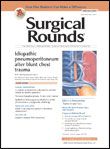More Treatment Options for Bothersome Uterine Fibroids
Uterine fibroids often cause symptoms such as heavy vaginal bleeding, anemia, constipation, bloating, and hydronephrosis that lower quality of life and lead to missed workdays for women.

Uterine fibroids often cause symptoms such as heavy vaginal bleeding, anemia, constipation, bloating, and hydronephrosis that lower quality of life and lead to missed workdays for women.
According to the National Institutes of Health (NIH), approximately 20% of women have fibroids in their childbearing years, and 70-80% of women develop them by age 50. The costs associated with fibroids are so staggering that Congress has discussed dedicating government funds to study the issue several times; in 2005, they approved $5 million for the research.
Historically, surgery was the single most important intervention for problematic fibroids. Today, physicians and women with fibroids have several options, which the January 2014 issue of The International Journal of Women’s Health detailed in a review article. Although the exact etiology that results in fibroid development is unclear, the authors discussed factors that increase the likelihood of their development, which include early menarche, an inverse relationship with parity, caffeine and alcohol intake, and infection. Although they are usually benign, fibroids rarely present a malignant leiomyosarcoma. Adhesion is most likely to develop in postmenopausal women.
Most women who have bothersome fibroids present with menstrual cycle or pelvic pressure symptoms. The most troublesome symptoms dictate the treatment approach, and a critical factor is the patient’s plans for future pregnancy. Gray-scale ultrasonography remains the gold standard for diagnosis, though magnetic resonance imaging (MRI) is a reasonable alternative in complex clinical circumstances.
Since many clinicians advocate conservative medical management, the authors discussed tranexamic acid, oral contraceptives and progestins, and the levonorgestrel intrauterine device (IUD) as accepted interventions. They also described the newer selective estrogen-receptor modulators, selective progesterone-receptor modulators, and aromatase inhibitors as potential therapies, noting the research that supports their off-label use. Additionally, they detailed miscellaneous agents that have treated fibroids with some success.
The paper’s section on minimally invasive surgical techniques covers uterine artery embolization as a uterine-sparing and fertility-preserving intervention. It also covered other recently developed minimal access treatments, which can be used for myomectomy or hysterectomy.
